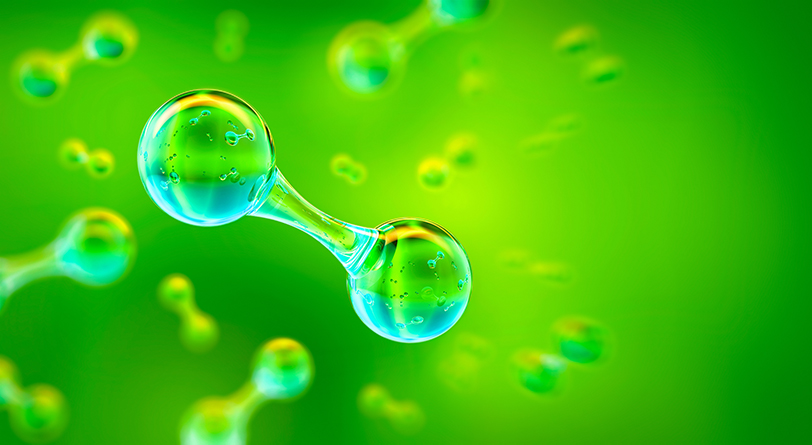Eco-Innovation in Flexible Packaging

Environmental concerns area a major part of global discussions, with many different industries being challenged to adopt sustainable practices. The packaging industry has recognized the need to minimize environmental impact and has been exploring eco-innovations in flexible packaging as a viable business solution. But what exactly is eco-innovation and how are sustainable materials and practices being integrated into the manufacture of flexible packaging?
From ordinary to extraordinary
Sustainable packaging has undergone something of a transformation recently, evolving due to a commitment to broader environmental responsibility. This evolution has seen the packaging industry investing in research and development to create modern packaging solutions that are environmentally friendly and functional. Consumer demand has played a crucial role in shaping this evolution as consumers now actively seek out sustainable products. This created a demand for eco-friendly packaging, which has forced companies to adapt and evolve their packaging. Traditional packaging materials can negatively impact the environment and contribute to pollution and waste. In response, the packaging industry has embraced innovative materials and technologies to reduce the environmental impact and end-of-life management to reduce pollution, turning toward biodegradable and compostable materials.
Sustainable materials in flexible packaging
Modern sustainable materials are revolutionizing the packaging industry and paving the way for more environmentally friendly businesses. These game-changing materials are the product of years of research and development and include plant-based polymers and compostable films that offer almost all of the versatility—and convenience—of traditional flexible packaging materials. These bio-based materials are derived from renewable resources and offer a more sustainable alternative, with much-reduced reliance on fossil fuels, providing a lower carbon footprint. As a bonus, these new packaging materials continue to be lightweight, so they continue to reduce fuel costs and emissions for transportation just as traditional flexible packaging materials. This presents a true win-win situation where materials that will benefit the environment will also offer potential economic advantages.
Technological advancements
The research and development of these game-changing sustainable materials have also led to interesting technological improvements in recycling infrastructure and the adoption of circular economy practices. Renewable polymers—derived from corn, sugarcane, or algae—are now a viable alternative to petroleum-based plastics. Bio-based alternatives are another promising avenue of technological advancement in the packaging industry. These bio-based materials are derived from sources such as plants or bacteria and are, therefore, a renewable and more environmentally friendly alternative to conventional packaging materials. Eco-friendly coatings have also been developed to enhance the barrier properties of food packaging, reducing the need for extra layers and increasing the overall recyclability. Improvements in recycling infrastructure using advanced recycling technologies also help increase the efficiency and effectiveness of the recycling process and, along with the adoption of a closed-loop circular economy system, will reduce overall waste.
Empowering change
Technology is playing a pivotal role in the packaging industry by driving sustainable practices and empowering change in the way packaging materials are developed and recycled. Companies today can easily identify the most efficient and sustainable food packaging options by using advanced modeling techniques, which not only reduce waste but also minimize the environmental impact and carbon footprint of the entire packaging process. Technology is also used in the production process to enable various types of sustainable food packaging using smart sensors and radio frequency identification tags to reduce the need for excessive packaging and reduce food waste. In addition, technology facilitates communication and collaboration between stakeholders to ensure packaging materials are sourced and transported efficiently and responsibly.
Conclusion
Eco-innovation is breaking former technological barriers using sustainable design techniques that incorporate innovative materials. The entire process encourages consumer awareness and collaboration for change in the industry. Sustainable design allows manufacturers to reimagine packaging materials and facilitates finding alternatives to traditional plastics to reduce our dependence on virgin production. The latest high-tech biodegradable, compostable, and recyclable materials all fit nicely with the idea of a circular economy where waste is transformed into valuable resources. Adopting this kind of closed-loop recycling system reduces the consumption of virgin raw materials and minimizes waste generation. This approach is favorable to the environment, and it is also financially beneficial for businesses. These innovative materials are redefining what is possible when it comes to the design and manufacture of flexible packaging.
Companies in the flexible packaging industry have been integrating technological advancements to provide sustainable packaging solutions for some years now, collaborating with industry partners to provide advanced modeling to enhance the use of new environmentally friendly materials.
Consumer education has played a crucial role in the way the industry has moved toward producing and using more sustainable flexible packaging products. Environmentally aware consumers are savvy about waste reduction and using reusable and recyclable alternatives. By supporting sustainable brands, customers can actively contribute to a greener future.
Eco-innovation has been transformative over the past few years in the flexible packaging industry, promoting the adoption of modern sustainable materials and driving changes in industry practices. This evolution in sustainable packaging has been delivered by leveraging technology to address consumer environmental concerns to ensure a more sustainable future.
Felicity Kelly is head of sustainability at Bunzl Australia and New Zealand.
NOTE TO READERS: We welcome submissions to this sustainability column. Please send your ideas to FlexPackVOICEcontent@theYGSgroup.com. Generally, articles can be up to 1,000 words, should be on issues important to the industry, and should not be self-promotional. Submitted photos will be considered for publication, as well.


